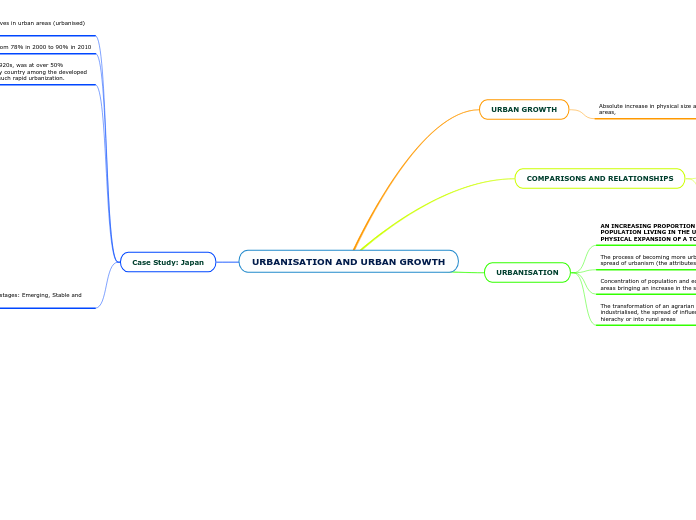da xDqmage _ mancano 4 anni
273
URBANISATION AND URBAN GROWTH

da xDqmage _ mancano 4 anni
273

Più simili a questo
Increase in inter-connectedness and accessibilty of transport system, with both privately owned public transport systems and PPP systems used.
Gentrification and the pursuit of better Quality of Life in the CBD district (1991): Buildings and Land lots were redeveloped into a more efficient multi-purpose design, spreading out the concentration of business and commercial areas by injecting entertainment and education options within the CBD
Redevelopment Plan released in 1988 in order to readjust land uses and maximise efficiency
Japan's land area is only about 378 km^2, with 70% of the land area covered by forest. Thus, land is divided into irregular sections privately owned by locals, which can slow development as they have to deal with all the landowners before development. Under the Land Redevelopment Scheme, landowners have to agree to give up a certain portion of their land, used to reshape the land into a more efficient layout and build public infrastructure.
Energy Conversation Act was passed in 1979 to allow for efficient use of resources such as fossil fuels, by the establishment of designated resource management factories and guidelines to reduce wasted power or fuel.
1970 Water Pollution Control Law aimed at preventing pollution of public water bodies, thus protecting human health and conserving the living environment of the area. To protect the victims of such discharge by assessing liability against factory and business owners who are responsible. Compensation to persons suffering from health problems related to discharges can be assessed against the factories and businesses.
2nd National Development Plan created in 1969 to construct a nationwide transportation network of motor ways and rapid national railways ('Shinkansen') system together with the implementation of large-scale industrial development projects. Business were also shifted out of over-concentrated areas (removal areas) to less developed areas (promotion areas)
1st National Development Plan created in 1962 using 'Growth Pole' strategy, encouraging the growth of industrial and commercial nuclei away from the existing major metropolises, while 15 new industrial cities were later designated in 1964, decreasing overpopulation and economic decline in more rural areas while increasing economic diversity.
Solutions: Urban Zoning, creation of Public-Private Partnerships for transport (Partnership between private companies and the government to faster create infrastructure)
High-quality towns and retail shops built along newly built railway lines increase accessiblity and allow for urban growth
1960 - The Income-Doubling Plan, aimed at doubling Japan's GDP from 7000 per capita by investing heavily in urban infrastructure, enabling rapid growth and industrialisation